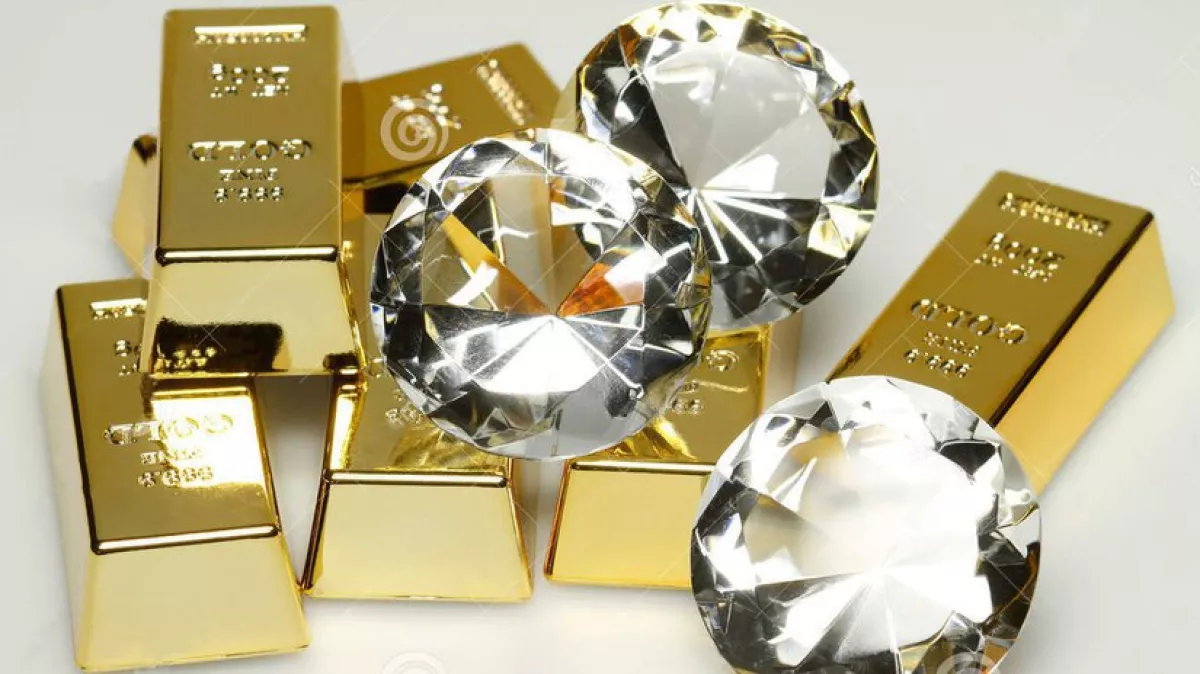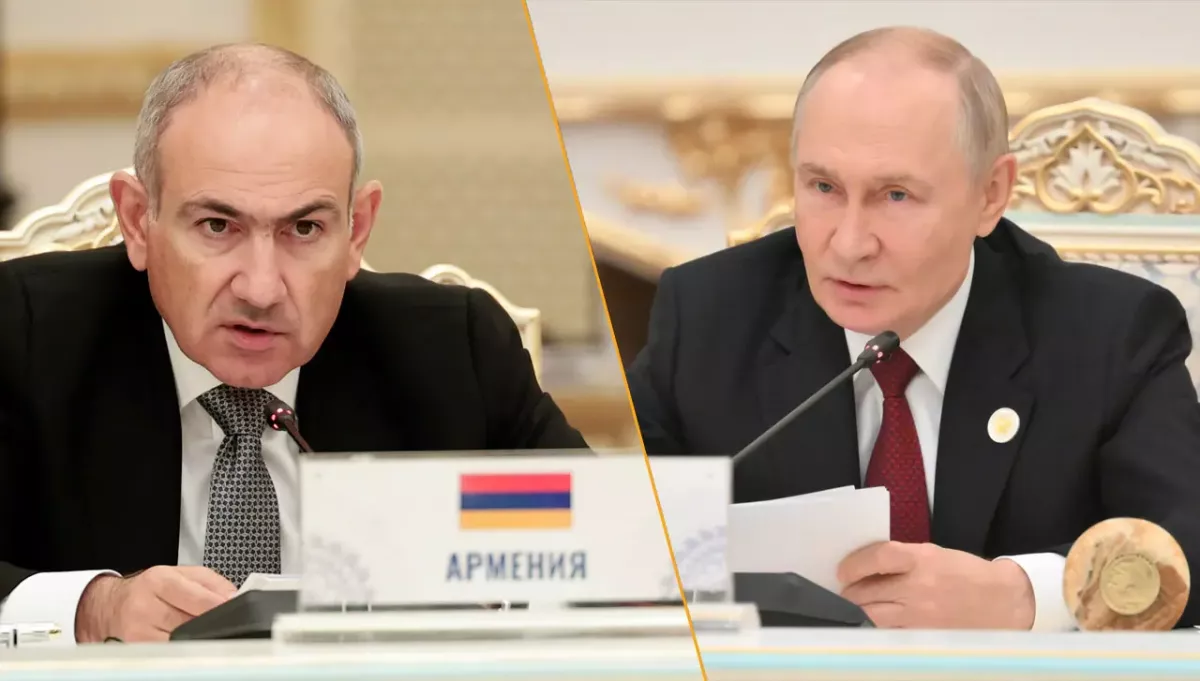Freudian slips at the Dushanbe Summit Armenia and Russia clash over trade figures
Over the past three years, Armenia’s remarkable economic growth has been almost entirely driven by the re-export of electronics, dual-use equipment, and other sanctioned or semi-sanctioned goods to Russia, as well as the resale of Russian gold and precious stones. Fearing secondary sanctions, Armenian authorities have been forced since last year to scale back these re-export operations while simultaneously taking steps to better conceal such transactions.
However, as the saying goes, “you can’t hide a needle in a sack.” This became evident during the recent meeting of the Council of Heads of State of the CIS in Dushanbe, where a dispute erupted between Armenian Prime Minister Nikol Pashinyan and Russian President Vladimir Putin over their reported trade turnover for the current year—figures the two leaders clearly could not reconcile.
It is no secret that since the outbreak of the Russian–Ukrainian war in February 2022 and the subsequent imposition of Western collective sanctions on Russia, re-export has become a key driver of Armenian–Russian trade. Armenian intermediaries began purchasing electronics, electrical equipment, machine tools, industrial machinery, and various components from industrially advanced countries in Europe, the United States, and Asia on a large scale. After reissuing customs documents under Armenian credentials, these dual-use products—accompanied by new invoices—were sent to Russia, generating substantial profits for Armenian companies.
According to a Fitch Ratings report published nearly two years ago, exports of goods from the Republic of Armenia (RA) to Russia have increased by 300% since 2022. Given the limited capacity of Armenia’s domestic industry and agriculture, these sectors could not have accounted for even ten per cent of this growth. Instead, the majority of Armenian–Russian trade was based on re-exported products from third countries.
Last year, Western countries intensified pressure on Yerevan, demanding restrictions on the supply of machinery, equipment, and dual-use items to Russia in circumvention of sanctions. Nevertheless, by the end of 2024, re-export trade had not slowed: official data indicate that Armenian–Russian trade turnover rose by 56.5%, reaching $12.4 billion.
Changes in this trade channel have been observed over the past eight months of the current year. Armenia’s total foreign and mutual trade decreased by 41.1% compared to the same period in 2024. This decline is largely due to the reduction in Russian–Armenian trade—which is not surprising, given that even with the downturn, trade between the two countries accounted for 34.8% of Armenia’s total trade turnover for January–August 2025. Russia continues to surpass China and the UAE, remaining among Yerevan’s top three trading partners.
According to data from the Statistical Committee of Armenia, trade with Russia over the first eight months of this year slightly exceeded $4.5 billion, representing a 51.3% drop compared to the same period last year (January–August 2024: slightly over $9.236 billion). Specifically, during this period, Armenian exports fell by 7.9% to $1.848 billion, while imports from Russia declined even more sharply, by 62.5%, to $2.763 billion.

Until relatively recently, Armenian exports to Russia exceeded reverse shipments. However, as pressure from Western countries increased, the share of dual-use goods and equipment purchased by Armenian traders on behalf of Russian counterparties began to decline within the trade structure.
Nevertheless, until recently, the most profitable business for Armenian companies remained the import of Russian gold—both in bullion and jewellery—as well as diamonds and uncut gemstones. At the same time, Armenia’s jewellery industry contributed little to value addition through the production of precious-metal jewellery or diamond cutting. Its role was largely limited to stamping the Armenian assay mark on Russian products, which automatically removed them from the scope of sanctions. Almost the entire volume of Russian gold and precious stones was then re-exported to the United Arab Emirates (UAE) and, to a lesser extent, Hong Kong, from where large sums of cash and securities were returned to Armenia through mutual settlements.
Based on data from the Statistical Committee, the observed 62.5% decline in Russian imports to Armenia in January–August indirectly indicates a sharp reduction in Russian shipments of precious metals and, to some extent, a winding down of speculative re-export schemes circumventing international sanctions.
“Problems for Russian–Armenian commerce were created by the recently signed Armenia–U.S. ‘Mutual Assistance of Customs Authorities’ agreement, which provides for the exchange of information between the customs services of the two countries,” noted Armenian economist Nairi Sargsyan. “Following this, the Ministry of Economy of the Republic of Armenia adopted a series of regulatory acts restricting the re-export of household appliances to Russia — televisions, computers, and other products containing microchips and electronic boards.” According to the expert, by reducing the intensity of re-export operations, Yerevan has bet on a deliberately anti-Russian policy, aiming for closer alignment with the European Union and the United States.
However, a complete halt to Armenia’s trade operations circumventing anti-Russian sanctions appears far from reality, as highlighted by a recent incident in Dushanbe during the meeting of the Council of Heads of State of the CIS. During the summit, Armenian Prime Minister Nikol Pashinyan and Russian President Vladimir Putin discussed trade turnover between the two countries.
When asked about the trade volume between Armenia and Russia, Pashinyan stated that for the first eight months of 2025, bilateral trade amounted to $4 billion, compared to $9 billion for the same period last year. Putin disagreed with these figures, suggesting that last year’s trade was higher and that this year’s was even higher. Pashinyan did not contest the claim, simply replying: “Well, maybe.”

This misunderstanding between the leaders of the two countries, caused by the discrepancy in the figures, might have seemed minor, but it triggered a rather tense reaction among Armenia’s political and expert community. Almost immediately after the well-known dialogue at the CIS summit, Armenian Minister of Economy Gevorg Papoyan posted on his Facebook page data confirming the inaccuracy of the figures cited by the Russian president: “Prime Minister Nikol Pashinyan announced the figures published by the Statistical Committee of Armenia, and therefore they are completely accurate.”
The discrepancy in the figures was subsequently commented on by Babken Tunyan, Deputy Chair of the National Assembly of Armenia’s Economic Affairs Committee. He also published the Statistical Committee’s data, emphasising that the figures presented by Prime Minister N. Pashinyan, although not entirely precise, reflect reality, noting that trade between Armenia and Russia has halved over the first eight months of the current year.
The deputy chair of the parliamentary committee considered it obvious that Russian President Putin’s forecast is incorrect, since trade figures this year cannot exceed last year’s unless a miracle occurs in the fourth quarter. Tunyan stressed that the figures for Armenian–Russian trade over the past 2–3 years should be approached with strict caution: “Because they include re-exports, and if we ‘filter out’ re-exports and try to understand the real trade turnover, the numbers will be significantly lower.”
The situation can also be viewed from the opposite perspective: it is quite possible that the double accounting of Armenian–Russian trade simply did not “reveal” part of the re-export flow this year, and that the Russian president, by citing forecasts for a higher trade volume, inadvertently hinted at the existence of uncounted re-exports. If this is indeed the case, the reasons for the sharp reaction in Armenia become clear, since in that scenario Yerevan’s commitments to Western countries to no longer participate in re-export schemes circumventing sanctions would appear rather “pale.”








